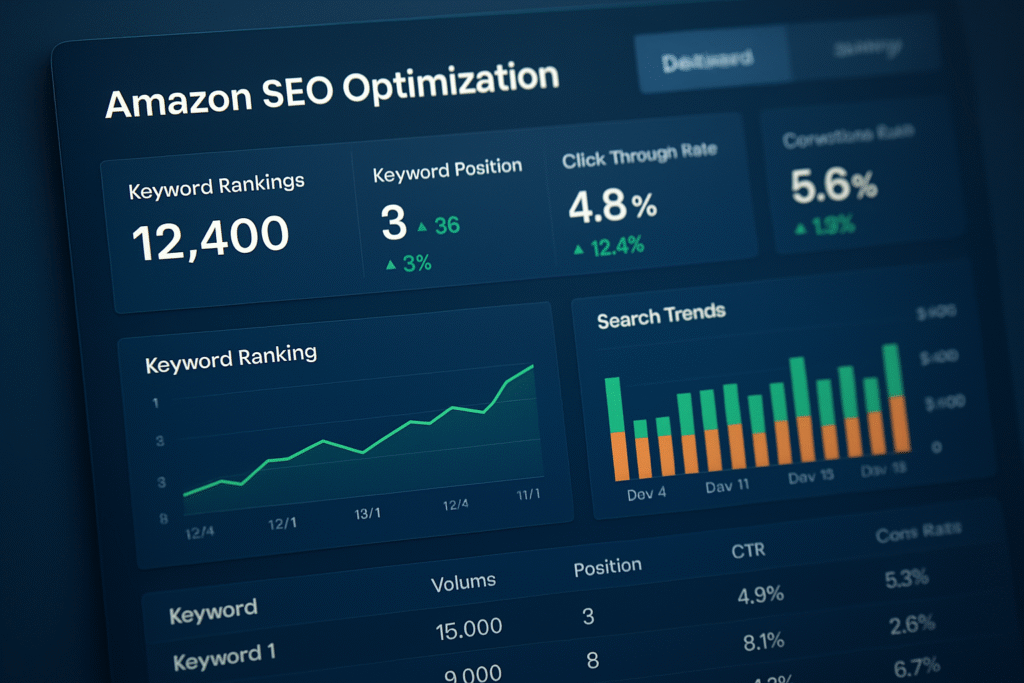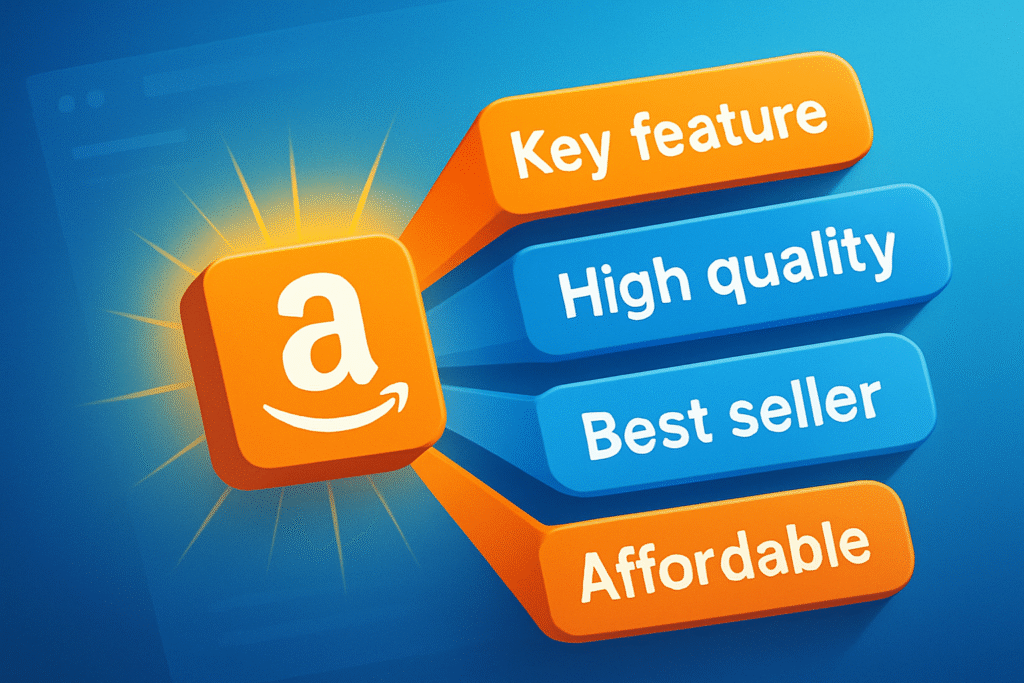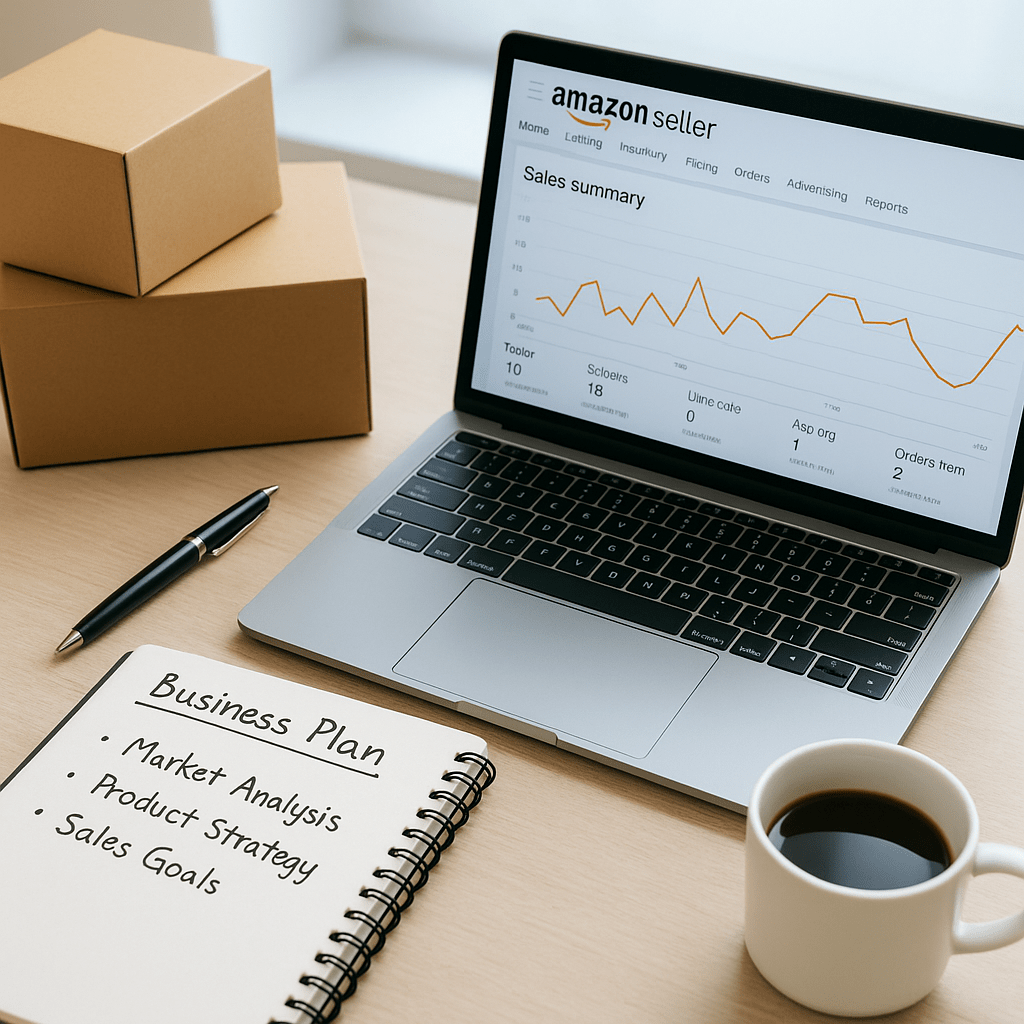Amazon SEO Optimization: How to Increase Amazon Sales Without Burning Money on Ads
Amazon SEO Optimization: How to Increase Amazon Sales
Introduction:
Amazon is the world’s largest product search engine. Millions of shoppers start their journey here, not on Google. But many sellers still rely heavily on ads, draining profits while their competitors win sales organically.
Here’s the reality: ads are temporary. Once your budget ends, visibility disappears. But with Amazon SEO Optimization, you create sustainable growth by ranking higher in organic search results. This means long-term visibility, lower customer acquisition costs, and stronger brand authority.
In this modern guide, we’ll cover everything you need to know about Amazon SEO optimization—from keyword research to advanced ranking hacks—so you can increase sales without burning money on ads.
Table of Contents:
- Understanding Amazon SEO Optimization in 2025
- Why Organic Amazon SEO Outperforms Paid Ads
- The A9 Algorithm: How Amazon Search Works
- Core Elements of Optimizing Amazon Listings
- Keyword Research for Amazon Search Engine Optimization
- Best Practices for Amazon Product Title Optimization
- Bullet Points, Descriptions, and Content Strategy
- Role of Backend Keywords and Hidden Search Terms
- Importance of High-Quality Images & A+ Content
- Reviews, Ratings, and Social Proof in Amazon SEO
- Pricing Strategy and Its Impact on Amazon Rankings
- Amazon SEO Strategy vs PPC Optimization
- Combining Amazon SEO and PPC for Maximum ROI
- Common Amazon SEO Mistakes to Avoid
- Advanced Amazon SEO Tips for Competitive Niches
- External Traffic: Google SEO for Amazon Products
- Amazon Store SEO vs Marketplace SEO Explained
- Tracking Amazon SEO Performance with Data Tools
- When to Hire Amazon SEO Experts or Agencies
- Future Trends in Amazon SEO Optimization
- Conclusion & Action Steps
- FAQ on Amazon SEO and Sales Growth
Understanding Amazon SEO Optimization in 2025:
Amazon SEO Optimization is no longer optional—it’s survival. Amazon’s search engine (A9) rewards listings that are relevant, keyword-rich, and sales-driven. Unlike Google SEO, where informational content dominates, Amazon SEO is purely transactional.
Key focus areas:
- Keywords = Relevance
- Conversion Rate = Performance
- Reviews & Ratings = Trust
Modern Amazon search engine optimization is about aligning your listings with what Amazon wants most: sales velocity.
Why Organic Amazon SEO Outperforms Paid Ads:
Ads are expensive, competitive, and temporary. But Amazon SEO strategy builds lasting visibility.
Benefits of SEO over Ads:
- Works 24/7 without extra budget
- Builds brand authority and trust
- Delivers higher ROI long term
- Reduces reliance on PPC
💡 Think of ads as caffeine, while SEO is nutrition. Both can energize your store, but only SEO sustains growth.

The A9 Algorithm: How Amazon Search Works
Amazon’s A9 search engine optimization algorithm ranks products based on two pillars:
- Relevance: Keywords in titles, descriptions, backend fields
- Performance: Conversion rate, sales history, reviews
The better you optimize for both, the higher your Amazon ranking SEO.
Core Elements of Optimizing Amazon Listings:
Every listing is a digital storefront. To maximize conversions, focus on:
- Amazon product title optimization
- Bullet points with benefits & keywords
- Backend search terms
- Professional images & videos
- Competitive pricing strategy
- Social proof (reviews, Q&A)
This is the foundation of effective Amazon product listing optimization.
Keyword Research for Amazon Search Engine Optimization:
Keywords are the fuel for Amazon SEO keywords. Without them, your product is invisible.
Modern Keyword Research Steps:
- Use Amazon autocomplete for high-volume terms
- Analyze competitor listings with tools
- Leverage Amazon Brand Analytics (if eligible)
- Fill backend fields with synonyms and long-tail keywords
Pro Tip: Balance high-volume keywords with low-competition long-tails for faster ranking.
Best Practices for Amazon Product Title Optimization:
Your title is prime real estate. Done right, it boosts clicks and conversions.
Formula: Brand + Product Type + Key Feature + Size/Variant + Benefit
✅ Example: “Glowvice Lab Vitamin C Serum – Brightening Face Serum with Hyaluronic Acid, 30ml”
Avoid keyword stuffing. Amazon rewards readability + keyword balance.
Bullet Points, Descriptions, and Content Strategy:
Bullet points = quick wins. Shoppers skim before they buy.
Best Practices:
- Focus on benefits, not just features
- Use strong action verbs (Protects, Boosts, Improves)
- Address customer pain points
- Include 1–2 keywords per bullet
Descriptions can use storytelling. Highlight transformation, not just specs. Use HTML formatting for readability.
Role of Backend Keywords and Hidden Search Terms:
Backend keywords act as invisible SEO boosters.
Rules for Backend Keywords:
- No repetition from titles/bullets
- Add synonyms & misspellings
- Include competitor product names (carefully)
- Keep under 250 bytes
This ensures full coverage in Amazon search terms optimizer.
Importance of High-Quality Images & A+ Content:
Visuals = Conversions. Amazon’s algorithm tracks CTR and sales.
- Use at least 7 images per product
- Include infographics & lifestyle shots
- Add product videos if possible
- Use A+ Content for enhanced storytelling
More clicks = better Amazon product page optimization
Reviews, Ratings, and Social Proof in Amazon SEO:
Reviews are more than trust signals—they’re ranking factors.
✅ Follow-up email sequences (within Amazon’s TOS)
✅ Enroll in Vine program for early reviews
✅ Respond to negative reviews professionally
Products with 4.5+ ratings dominate in Amazon listing SEO.
Pricing Strategy and Its Impact on Amazon Rankings:
Amazon wants competitive pricing. If your product is overpriced, your rankings drop.
- Monitor competitors daily
- Use coupons & lightning deals
- Bundle products for perceived value
Effective pricing boosts Amazon seller SEO and Buy Box wins.
Amazon SEO Strategy vs PPC Optimization:
SEO = long-term growth
PPC = short-term traffic
Use PPC optimization Amazon for:
- Product launches
- Seasonal pushes
- Beating new competition
But always combine with Amazon SEO best practices for lasting impact.
Combining Amazon SEO and PPC for Maximum ROI:
The most successful sellers balance both.
- PPC drives sales velocity
- SEO secures long-term rankings
- Together, they build an unstoppable growth loop
This dual approach is used by every top Amazon SEO company.
Common Amazon SEO Mistakes to Avoid:
🚫 Keyword stuffing titles
🚫 Ignoring backend fields
🚫 Poor image quality
🚫 Copy-pasted competitor content
🚫 No review strategy
Fixing these can dramatically improve Amazon product SEO.
Advanced Amazon SEO Tips for Competitive Niches:
- Use external traffic (Google, YouTube, TikTok)
- Add lifestyle imagery to boost emotional appeal
- Implement split-testing for titles & images
- Monitor ranking shifts weekly
Staying proactive is key in tough markets.
External Traffic: Google SEO for Amazon Products:
Amazon rewards external traffic. Sending buyers from Google improves your ranking.
Ways to leverage:
- Write blog posts optimized for “best on Amazon”
- Run YouTube reviews linking to your listing
- Build an email list with promo codes
External signals accelerate SEO Amazon FBA rankings

Amazon Store SEO vs Marketplace SEO Explained:
- Amazon Store SEO: Optimizing brand storefronts for multi-product visibility
- Amazon Marketplace SEO: Optimizing individual product listings
Both matter—together they strengthen Amazon SEO marketing.
Tracking Amazon SEO Performance with Data Tools:
Monitor your progress using tools like:
- Amazon Brand Analytics
- Helium 10 / Jungle Scout
- Data dashboards
Track:
- Keyword rankings
- Click-through rate
- Conversion rate
- Sales velocity
Data-driven sellers dominate in Amazon SEO optimization.
When to Hire Amazon SEO Experts or Agencies:
If you’re stuck or scaling, an Amazon listing optimization agency can help.
They handle:
- Amazon SEO consulting
- Content rewriting
- Keyword tracking
- PPC + SEO synergy
Professional guidance = faster ROI.
Future Trends in Amazon SEO Optimization:
- AI-powered keyword suggestions
- Voice search optimization
- Video-first product pages
- Greater weight on external traffic
Staying updated ensures long-term dominance.
Conclusion & Action Steps:
Winning on Amazon doesn’t require endless ad spend. With Amazon SEO Optimization, you can create a growth engine that attracts organic traffic, builds trust, and increases sales sustainably.
👉 Start today: audit your listings, apply these strategies, and track results. Over time, you’ll rely less on ads and more on the power of organic rankings.
If you found this guide useful, share it with fellow Amazon sellers—and don’t forget to drop your questions below!
What is Amazon SEO?
How long does Amazon SEO take to work?
Do I still need PPC if I optimize SEO?
What’s the difference between Amazon SEO and Google SEO?
Should I hire an Amazon SEO agency?
Recent Posts
- All Post
- Amazon Compliance
- Amazon FBA Guide
- amazon market analysis
- Amazon PPC
- Amazon Stock
- Amazon Tools
- Business Strategy
- Ecommerce News & Analysis
- Full Account Management Services
- Guide
- Guide 2025
- News
- News 2026
- PPC Services
- Prime day
- Stories
- Team Memebers
- Technology and Digital Services
- Top Agencies
- Top PPC tools



Get a Quick Solution
Need help fast? Our expert team is here to provide you with efficient and reliable solutions tailored to your needs. Don’t wait—reach out today!
Categories
- Amazon Compliance (5)
- Amazon FBA Guide (6)
- amazon market analysis (2)
- Amazon PPC (30)
- Amazon Stock (1)
- Amazon Tools (1)
- Business Strategy (12)
- Ecommerce News & Analysis (6)
- Full Account Management Services (58)
- Guide 2025 (20)
- News 2026 (12)
- PPC Services (58)
- Prime day (2)
- Technology and Digital Services (1)
- Top PPC tools (1)
Subscribe for Growth Tips, Seller Hacks & eCom Wins


